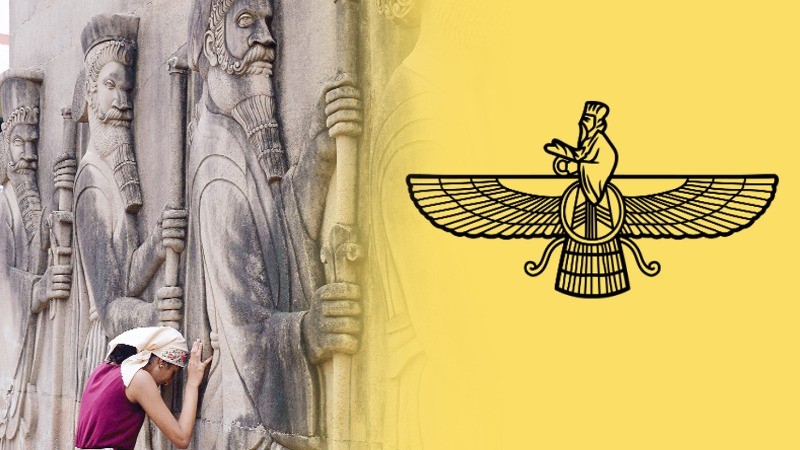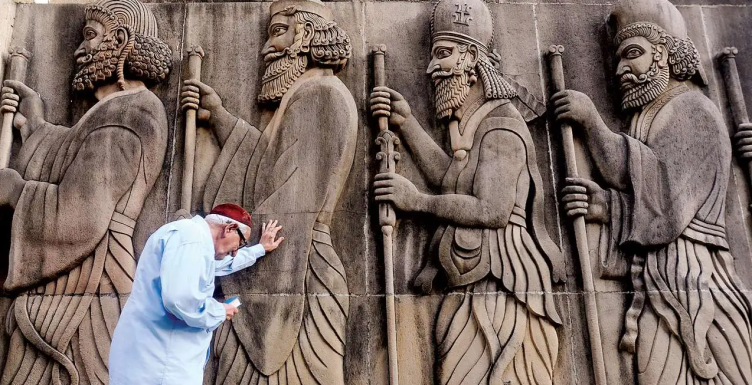
The Parsi community, followers of Zoroastrianism, has its origin in Persia (now Iran). Nearly 1375 years ago, they migrated to India holding the sacred fire, during the 7th to 10th centuries, to save the Zoroastrian faith, due to widespread religious persecution in Iran by Islamic powers. Upon arriving in India, they requested to seek asylum from King Jadi Rana in Sanjan, Gujarat. The gracious king allowed them shelter in his territory. There is no significant difference between Iranian and Parsi customs, traditions, and principles. The community was primarily centered in Gujarat and Mumbai, but is now segregated in various parts of the country. They have integrated well into Indian society while remaining rooted in their culture, much like sugar in milk. Despite being a small minority group in India, they are so fulfilled and contented that they have never accepted or demanded anything from the people or the Government of India. In fact, the Parsis have been quite influential, contributing to the nation's growth in all possible aspects through their prowess.
The Parsi culture
The Parsis worship one God, Ahura Mazda, holding fire as the sacred element. They worship fire as a representation of light and truth in Agiaries. Sam Pavri, ex-minister BJP and a respected member of the Parsi community, states that the Parsis worship the Panchtatva (Earth, air, water, fire, and ether), the cow, and primarily all the natural elements. The religion is believed to be based on morals and the deeds of the people. The Parsis stick to their self-perceptions that revolve around their culture and identity. They are a very intact and closely knit community.
_685f8f2fd3ef4.jpg) Sam Pavri (on the right back) and his family in their traditional Parsi attire during a ceremony. Sam and his son can be seen wearing a Dugli (white coat) and the Pheta/Paghdi (the headgear), while his wife is dressed in a Gara-style saree
Sam Pavri (on the right back) and his family in their traditional Parsi attire during a ceremony. Sam and his son can be seen wearing a Dugli (white coat) and the Pheta/Paghdi (the headgear), while his wife is dressed in a Gara-style saree Sam Pavri says that marriage outside of the community is prohibited. One is born Parsi, there is no other way. There is an initiation ceremony, 'Navjote', for the individuals born into the Parsi-Zoroastrian faith, where they are formally invested with a sudre (sacred shirt) and kusti (sacred thread). It is performed before the child hits puberty, which is the age of 13 for boys and 10 for girls.
High level of education and wealth: The community has always focused on education, and has progressed with a high literacy rate. Parsi women are also educated uniformly as the men of their community.
Besides being educated, the Parsis are a wealthy breed. They have their flourishing businesses and are capable enough to provide for the betterment of the whole community.
The Parsis have never been involved in any significant crime. It was only in the KM Nanavati vs the State of Maharashtra case, and during the Parsi-Muslim riots. There has been no other defining record of a crime committed by a Parsi.
The Parsi community has been in existence in Madhya Pradesh for 150 years now, since the 19th century. Even though not many, a significant number of Parsis are living in Indore, Neemuch, and Mhow regions of the state. The community is smaller in size here, with only 150 members, and often faces many challenges. The most prevalent issues include property management.
The Parsi community has given the best to the country, in business, philanthropy, and education. They have transformed India with infrastructure, innovation, and growth, particularly in the industrial sector. Who can forget the likes of Sir Ratan Tata, Homi Jahangir Bhabha, Dadabhai Naoroji, and Sam Manekshaw, among others? But what did the Government do for them?
Sam Pavri replies, "It's not that the Government never did anything for our community. We have all the rights as minorities. The Government also offered for reservation of a seat in the Rajya Sabha, but we declined. Our community has been accepted by this nation, not only sheltering us, but today we are living a life of dignity. We have never wanted anything more. Our ancestors chose to live as the sugar blended in milk."
Parsis on a decline: The community is vanishing!
The Parsi population is declining, not only in India but worldwide. In the 2011 Census, there were 57,000 Parsis in India. Close to 15 years today, Sam Pavri said that the Parsi community has only 50,000 members in India.
 As many as 400 Parsis were born between 2014-2024, but that isn't enough for the community's survival
As many as 400 Parsis were born between 2014-2024, but that isn't enough for the community's survival The Parsis are more of an ageing population in India, declining by 12% every 10 years of the Census. This is contrary to India's population growth. There are ongoing campaigns to promote childbirth in the community. Many men and women remain unmarried by the age of 50, the fertility levels are decreasing, with deaths surpassing births. The elderly are even vulnerable to many crimes and attacks, where their loneliness drowns them.
To revive the Parsi population, the Ministry of Minority Affairs, along with the Parzor foundation, Bombay Parsi Panchayat, and the Tata Institute of Social Sciences, launched the 'Jiyo Parsi' scheme in 2016. Seeing the declining population and reduced fertility, the scheme aimed to encourage and raise awareness with medical intervention and advocacy, so that even young Parsi couples opt for more than one child.
Sam Pavri adds that there are efforts driven towards fostering the birth of a third child. In Mumbai and Gujarat, the community is bearing the costs of 3BHK flats for the families. Moreover, the third child's education will be provided for by the Parsi community trust, be in any part of the world.
The community is even more scared of the rising intermarriage culture, addressing them as 'half-castes' who might ruin their legacy. By 2016, it was 38% and is only growing. They might be able to accept children of all mixed marriages, and it might be good for the statistics, too, but it's about their distinct ethnic identity, which will be lost.
Sam Pavri finds the future worrying for Parsis, calls it tough. And it actually seems so. Because the population is on a decline, and those who are living are also ageing gradually. Let's hope that the distinct ethnic minority thrives, and does so with its own unique cultural identity that's preserved for generations.